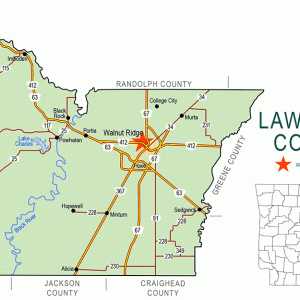calsfoundation@cals.org
Alicia (Lawrence County)
| Latitude and Longitude: | 35°53’35″N 091°04’58″W |
| Elevation: | 253 feet |
| Area: | 0.43 square miles (2020 Census) |
| Population: | 143 (2020 Census) |
| Incorporation Date: | August 7, 1889 |
Historical Population as per the U.S. Census:
|
1810 |
1820 |
1830 |
1840 |
1850 |
1860 |
1870 |
1880 |
1890 |
1900 |
|
– |
– |
– |
– |
– |
– |
– |
– |
– |
150 |
|
1910 |
1920 |
1930 |
1940 |
1950 |
1960 |
1970 |
1980 |
1990 |
2000 |
|
168 |
297 |
342 |
333 |
299 |
294 |
246 |
246 |
157 |
145 |
|
2010 |
2020 |
|
|
|
|
|
|
|
|
|
124 |
143 |
|
|
|
|
|
|
|
|
Alicia is on the segment of U.S. Highway 67 that has been dubbed Rock ’n’ Roll Highway 67. In addition, the length from Alicia to Hoxie (Lawrence County) is one of five sections of the Old U.S. Highway 67 listed on the National Register of Historic Places. Built as a railroad stop, the town was once the southernmost passenger stop on the Iron Mountain railroad in Lawrence County.
The Osage once hunted in northern Arkansas, although they lived farther north and left few archaeological remains in the area that would become Alicia. After treaties removed the Osage and other Native Americans from the area, the land was opened for settlement, but much of the land around Alicia remained unclaimed for many years. James Gardner registered a land patent for farmland just west of the future site of Alicia in 1820. Much of the land surveyed in the area was swampland and sloughs, with some forested areas containing oak, elm, hickory, gum, persimmon, cypress, and tupelo trees.
However, the site was often visited because its location lay along the route that connected St. Louis, Missouri, to Texas. Developed as a military road generally known as the Southwest Trail, the route would later be used by railroad and automobile traffic. The St. Louis, Iron Mountain and Southern Railroad was built through the region in 1873, and a railroad stop and post office were opened that year. It is said that a contractor for the railroad named the new depot and post office after his wife, Alicia Swift. The railroad would later change hands, becoming first the Missouri Pacific Railroad and eventually part of the Union Pacific Railroad.
Part of the popularity of Alicia, according to local historians, was its proximity to the county line, being that Jackson County allowed the sale of liquor while Lawrence County did not. The town was incorporated on August 7, 1889. The Goodspeed history of the area was published that year and reported that Alicia had three general stores, a sawmill, a cotton gin, a Baptist church, a schoolhouse, and several family homes. Later, two hotels were also built in Alicia. The original wooden school building was replaced by a brick schoolhouse in 1914. By the 1920s, the town also fielded a baseball team and had two theaters. Like many other towns in the area, Alicia was fed for a time by the timber industry, but as the hardwood forests were thinned, Alicia survived by turning to agriculture. Cotton was the major crop for a time, but it was later supplanted by rice, soybeans, sorghum, and winter wheat. A Farmers’ Bank operated in Alicia until the Depression caused it to close.
In 1926, a federal highway was planned to connect Fredericktown, Missouri, with Dallas, Texas. Designated U.S. Highway 67, the road followed the path of the old Southwest Trail, often parallel to the railroad tracks. In Alicia, the highway runs just west of the tracks. Thirty years later, many towns along the highway would host performances of budding musicians including Elvis Presley, Johnny Cash, Roy Orbison, and Sonny Burgess. Swifton (Jackson County) to the south of Alicia was noted for such performances, and undoubtedly much of the youth from Alicia could be found at such concerts and dances on Friday and Saturday nights.
During the Depression, Alicia was still being described as “a respectable thriving little town with good schools and churches.” However, an increase in automobile traffic meant that residents of Arkansas’s smaller towns could easily travel to larger cities for more varied and affordable shopping.
As businesses closed and the rural population declined, school districts were consolidated. After 1930, high school students from Alicia attended school in Swifton. In 1948, voters chose to be annexed into the Walnut Ridge School District. After the Alicia school burned in 1969, all students attended school outside the town.
Alicia was home to a roller skating rink that burned down in the 1950s. A city water tower was installed in 1966. Three years later, a fire truck was purchased for the volunteer fire department. (Its first call was to the fire at the schoolhouse.) Garbage pickup began in 1974, and a sewer system was installed in 1983.
In 1992, there were still four churches in Alicia: Church of Christ, Southern Baptist, Pentecostal, and United Methodist. However, by 2014, only the Baptist church remained.
For additional information:
Clark, Lloyd W., Jr. “Alicia: A Personal History.” Lawrence County Historical Quarterly 15 (Summer 1992): 5–15.
McLeod, Walter E. Centennial Memorial History of Lawrence County. Russellville, AR: Russellville Printing Company, 1936.
Steven Teske
Butler Center for Arkansas Studies
 Lawrence County Map
Lawrence County Map 




Comments
No comments on this entry yet.